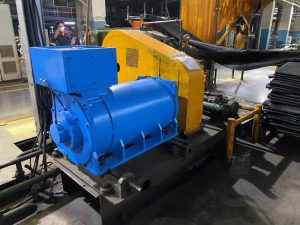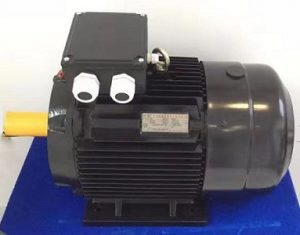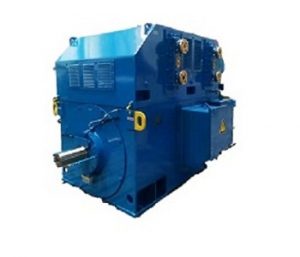Construction
The permanent magnet synchronous motors, like any rotating electric motor, are consisted of a rotor and a stator. The permanent magnet synchronous motor construction is similar to the basic synchronous motor, but the only difference is with the rotor. In this type of motor, the permanent magnets are mounted on the rotor and the rotor doesn’t have any field winding.
The permanent magnets are used to create field poles. The permanent magnets used in the PMSM are made up of samarium-cobalt and medium, iron, and boron because of their higher permeability. The most widely used permanent magnet is neodymium-boron-iron because of its effective cost and ease of availability.

Working Principle
The working of the permanent magnet synchronous motor is very simple, fast, and effective when compared to conventional motors. Its operation is based on the interaction of the rotating magnetic field of the stator with the constant magnetic field of the rotor. The permanent magnets are used as the rotor to create constant magnetic flux, operates and locks at synchronous speed. These types of motors are similar to brushless DC motors.
The phasor groups are formed by joining the windings of the stator with one another. These phasor groups are joined together to form different connections like a star, Delta, double and single phases. To reduce harmonic voltages, the windings should be wound shortly with each other.
When the 3-phase AC supply is given to the stator, it creates a rotating magnetic field and the constant magnetic field is induced due to the permanent magnet of the rotor. This rotor operates in synchronism with the synchronous speed. The whole working of the PMSM depends on the air gap between the stator and rotor with no load.
If the air gap is large, then the windage losses of the motor will be reduced. The field poles created by the permanent magnet are salient. The permanent magnet synchronous motors are not self-starting motors. So, it is necessary to control the variable frequency of the stator electronically.

Characteristics
No sparks, safer in explosive environments
Clean, fast, and efficient
More compact, efficient, and lighter than an ACIM
Designed for high-performance servo applications
Runs with/without position encoders
Low audible noise and EMI
Smooth low and highspeed performance
Produces optimal torque when coupled with Field-Oriented Control (FOC)
